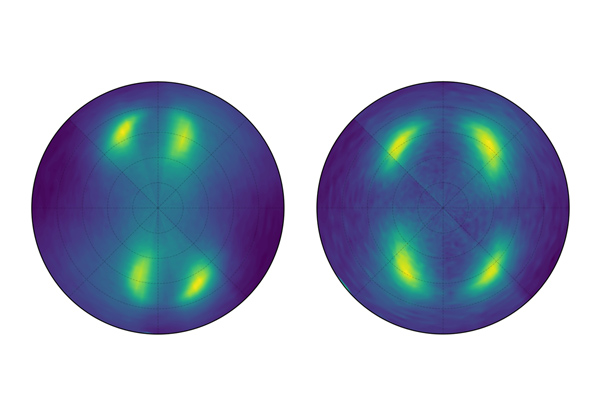| Apr 05, 2024 |
Using ultrasound to probe antiferromagnets
|
|
(Nanowerk News) RIKEN physicists have used ultrasonic waves to measure a magnetic material known as an antiferromagnet (Physical Review Letters, "Acoustically driven magnon-phonon coupling in a layered antiferromagnet"). This advance will make it much easier to probe its properties, boding well for the development of new devices based on antiferromagnets.
|
|
Today’s data-storage devices mostly rely on ferromagnets—magnetic materials such as iron, nickel and cobalt in which all the magnetic fields of the atoms are aligned with each other.
|
|
But another class of magnetic materials known as antiferromagnets, in which the magnetic fields of adjacent atoms point in opposite directions, offers several advantages over ferromagnets. In particular, since the magnetic fields of the individual atoms effectively cancel each other out, they can realize much higher data storage densities.
|
 |
| Two plots showing the results of using ultrasound to probe a magnetic material known as an antiferromagnet at temperatures of 4.2 kelvin (left) and 10 kelvin (right). (© )American Physical Society)
|
|
“Because there’s no net magnetization in antiferromagnets, you can cram magnets closer together before they start talking to each other,” explains Jorge Puebla of the RIKEN Center for Emergent Matter Science. “So you can create memory devices with much more densely packed elements using antiferromagnets than using ferromagnets.”
|
|
But one disadvantage of antiferromagnets is that they can’t be probed using conventional measurement techniques, making it challenging to determine their properties.
|
|
“The difficulty in accessing antiferromagnets experimentally is one of the main reasons why they are less understood than ferromagnets, even though they’ve been around for more than half a century,” says Puebla.
|
|
Now, Puebla and co-workers have shown that sound waves can be used to probe antiferromagnets made from special compounds known as van der Waals materials, in which layers of the material are held together by weak molecular van der Waals forces.
|
|
The secret to their success lay in their judicious selection of material. Because the bonds between adjacent layers are much weaker than in normal materials, ultrasonic waves generate magnetic waves known as spin waves in the material, allowing the researchers to probe its properties. Typically, much higher frequencies than those of ultrasound are needed to excite spin waves in antiferromagnets that are not made from van der Waals materials.
|
|
This ability to probe antiferromagnets made from van der Waals materials with sound waves will help accelerate the study of antiferromagnets. “Now that we can couple acoustic waves with antiferromagnets, we will be able to conduct many experiments similar to those that have been done with ferromagnets,” says Puebla.
|
|
In particular, the team is already working on using sound waves to detect currents created by moving electron spins in antiferromagnets.
|
|
They are also exploring what happens when sound waves strongly interact with spin waves. “This is known as the strong-coupling regime, and a lot of interesting physics occurs in it,” says Puebla. “It’s also anticipated to give rise to a lot of interesting technologies.”
|

